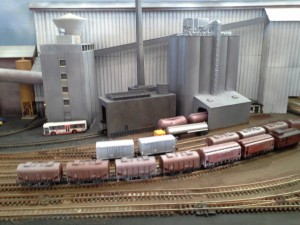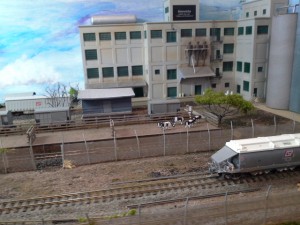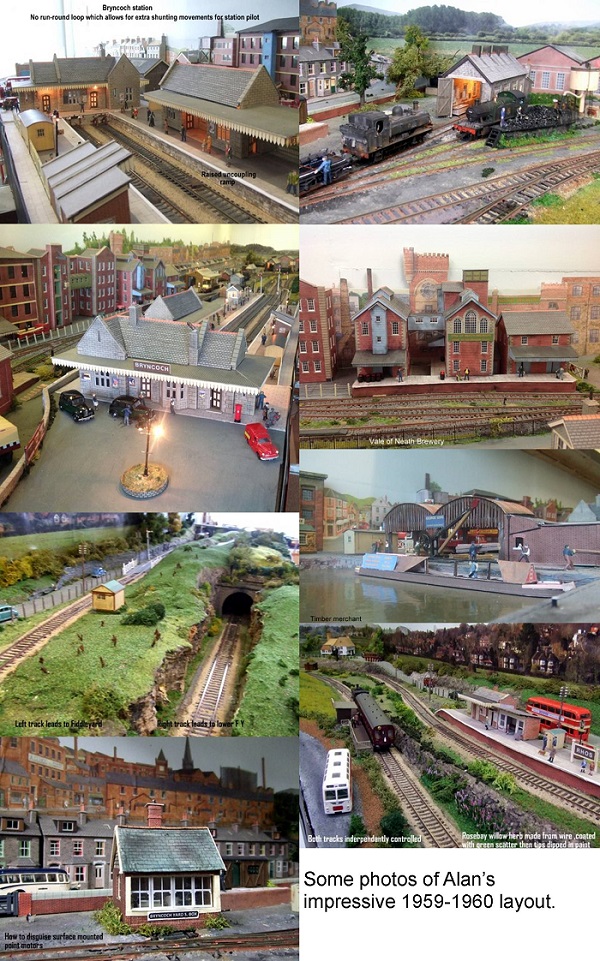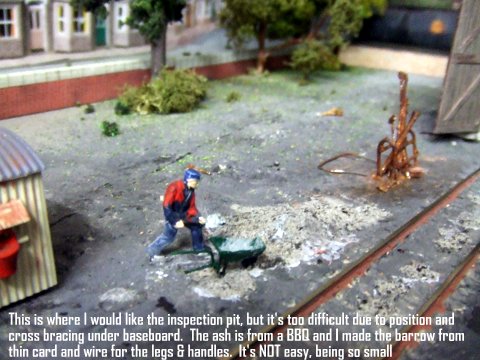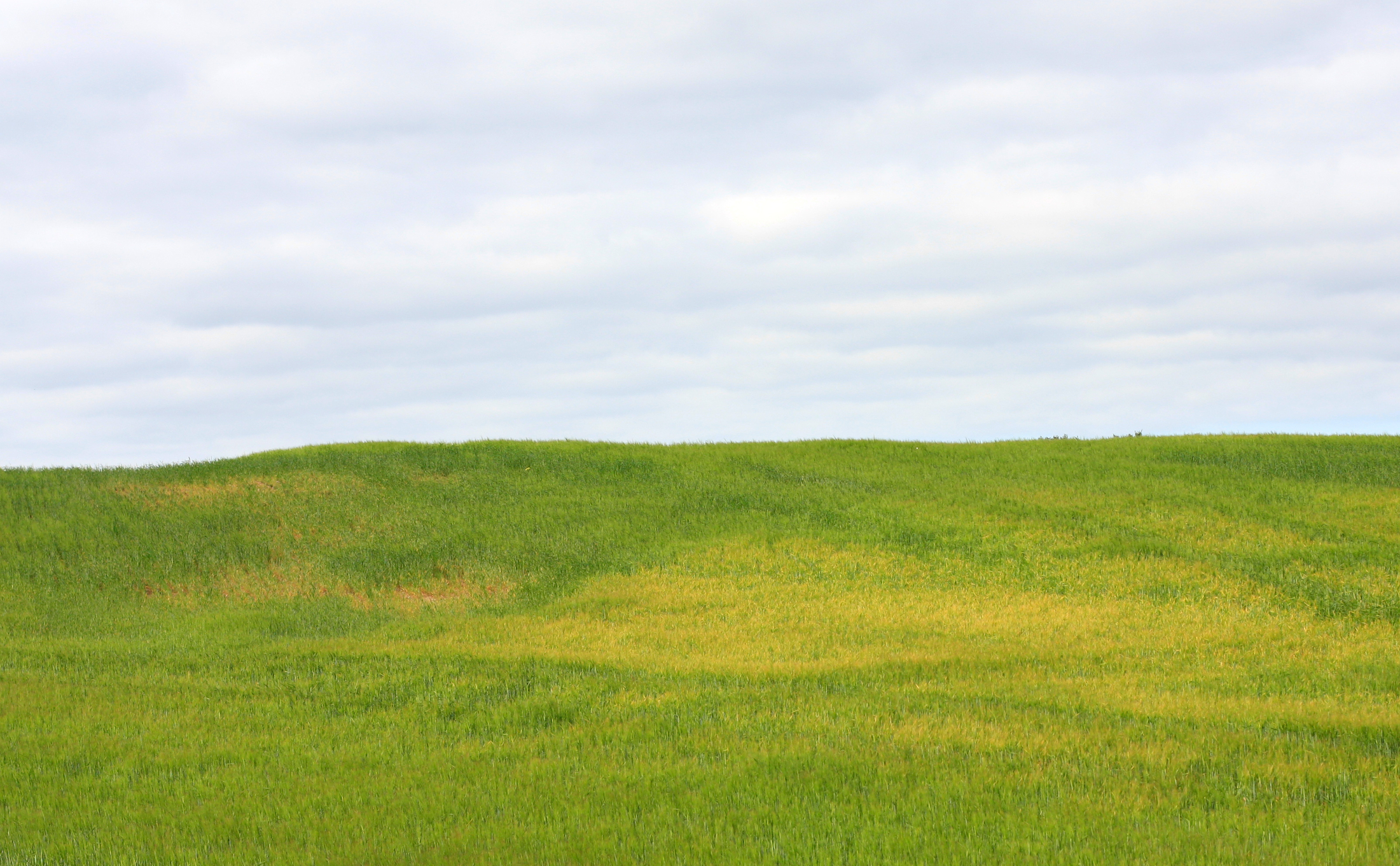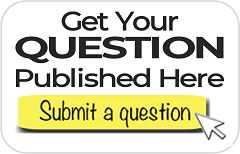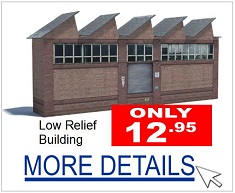Everything on model trains, model railroads, model railways, locomotives, model train layouts, scenery, wiring, DCC and more. Enjoy the world's best hobby... model railroading!
Plans for 3 New Silo Facilities
Don’t panic! If you are not skilled with an airbrush, you don’t need to be… because these 3 new structures are already detailed and weathered to a very high standard. So… NO airbrushing or painting is needed!
- Silo facility #1 (plan B530) is the Silo Storage Company complex
- Silo facility #2 (plan B531) is the Advance Rail Forwarders complex
- Silo facility #3 (plan B532) is the Bulk Road & Rail Silos complex
Plans available from http://www.modelbuildings.org/industrial-silos-models-to-make.html
What to use for Benchwork Materials
Jerome asks readers:
“This will be my first layout when I finally pluck up the courage to get started. I have been doing heaps of reading and research on trains and wiring but taking the first step with construction is harder than I thought. I guess it’s because I’m a bit of a control freak, not very skilled with carpentry, and don’t want to stuff anything up. I have a 12ft x 8ft space and have decided on HO. I thought of using radiata pine for the frame and MDF for the base. Is this ok? What thickness is best? I just need a push to get me started.”
Whats The Best Model Railroad Aisle Width
This quick tip will be particularly helpful for beginners who don’t yet have a layout.
How To Build Rail Bridges
Ryan has a question for readers:
“I am a very new beginner. My train room isn’t built yet but is underway. My HO layout is going to be an L shape and I want to know how to add a couple bridges and waterfall features. Will I have raise my layout up from the beginning and make a gap along the track to implement a bridge? What’s the best material and any advice is appreciated. Thanks.”
Switches and Frogs
Alan asks readers:
“I am having frustrating times with my trains derailing – both locomotives and cars. It is the frogs in the switch that is causing the derailments. I have checked and double checked the switch tension to no avail. Can someone guide me to a solution please?”
NEW! 6 Rail Yard Buildings – Just Released
Just Released are plans for these 6 new railroad yard buildings.The video (which is less than a minute long) shows all 6 buildings. It even shows a close up of one of the buildings revealing the intricate detailing and weathering techniques. These plans can be constructed using whichever materials you prefer using – card, corflute, balsa, foam sheet… you decide. More photos and details are on the web page http://www.modelbuildings.org/railroad-yard-designs.html
They can be purchased individually on as a package deal saving 68%!
Model Train Beginner Seeks Advice
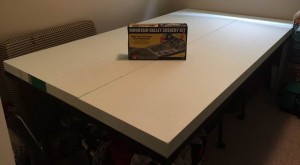 Marcel is just starting in the hobby and seeks advice from readers:
Marcel is just starting in the hobby and seeks advice from readers:
“Although slowly moving along, below is a picture of my “To be” Train table. It is a Ping Pong table with 3” high foam board. Also, I have a mountain kit. What I would like to ask is what should my next step be? I have a Bachmann Acela Speed Train that if possible will run the perimeter of the lay-out. Since the mountain has only one tunnel opening, I guess the Acela will utilize it. Do you know of any good ‘somewhat beginner’ resources? Any advice you can provide?”
Power For Diesel Area 51 Locomotive
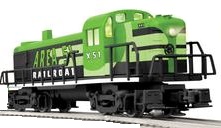 Joe sent in this idea to share –
Joe sent in this idea to share –
I just wanted to tell you about the fix I came up with for my Lionel wireless locomotives. I bought two locomotives from a hobby shop last Christmas. One is the diesel Area 51 and the Scout locomotive. These locomotives run on the track with wide open power for the transformer and controlled by a battery operated hand held pendant. I supply power to them from a Z transformer. When I had a derailment or passing through a track switch, the track would short out, causing both locomotive components to burn up. However Lionel did honor their warranty, I wanted a better fix. I laid out a dedicated track without switches.
My theory is that with AC current from the transformer to the track is 18 Volts. The Z transformer has higher Amperage output than smaller transformers. I relate electricity like plumbing. Voltage as the water pressure and Amperage as the water supply. There are two legs from the transformer, a hot and a common. In ideal conditions, the AC current is produced evenly on both legs. If of the legs allows more electronic flow than the other, (short) the voltage drops like water pressure would. At this time the transformer tries to keep the balance by using providing more amperage to produce more voltage. This is called an IN RUSH. When the higher voltage is supplied to the components it is turned back to Amperage, through resistance and heats up the components burning them up.
I couldn’t get any information from Lionel as to what the accepted threshold of amperage is for the their locomotives.
As a fix, I went to the auto parts store and purchased a Buss fuse holder and a box of 5 AMP fuses. I wired up the fuse holder in series to hot terminal of the transformer to the track. When there is a derailment or a short, the fuses blow instantly without damaging the locomotives.
With the 027 tracks, Switches tend to have small shorts as a lighted car on some locomotives pass through. Lionel calls them snaps. These snaps will burn out the locomotives if not protected in your train stops in the switch over a very short time..
I know it’s confusing to some, but the fix works. Some new transformers produced by Lionel have this protection as a circuit breaker starting around $150.00.
Is N Scale Too Small for a 15 ft by 6 ft Layout?
Andy asks readers:
“I am a 74 year old neophyte planning to build either an HO or N scale layout. My platform is 15 feet by 6 feet. It was suggested to me that working in N scale was too difficult for someone my age because of the difficulty dealing with small details. Any suggestions would be appreciated.”
How To Add A Photo or Diagram To This Blog
Thank you to all those readers who requested we add a function to allow them to post a photo or diagram when they answer a question. We have worked out the techie stuff on how to do it, so can now offer this service.
So, when you go to add a comment to a posting on this blog, you can now add a photo to explain the answer you are giving (if you want to that is). This quick clip gives a demo.
Please Note: All comments and photos still get submitted to the Blog Moderator for approval before they are published. This is to stop spammers and to maintain a very high standard of content. Poorly worded questions and answers are not published.
Impressive 1959 – 1960 Model Railway
Alan sent in these photos of his layout to share. I’m sure you’ll agree he should be very proud!
Here’s what Alan has to say –
The theme is South Wales in 1956-60, when I used to go to school by train. It is purely fictional and is suppose to be a small branch line. It is 00 scale.
It’s DC controlled so isolating sections have to be provided. It is a terminus to Fiddle yard type, two F/Y’s actually. The main one has 7 roads and the lower one has only one. Both are turntable types which means I don’t have to handle the stock too much. The lower one is accessed by a tunnel which also houses a short spur for either a diesel railcar or auto train.
I use a Gaugemaster dual controller as both tracks are independently controlled although trains can cross between the two.
I enjoy authentic operation more than just watching trains go by. The shunting operations are much more interesting which are carried out by the station pilot.
Most locos used are tank engines but I do have 5 tender locos, three of which are used on the high level track, but that’s another story.
Some points are electrically operated, but a lot of retro fitted ones are mechanical. I prefer the latter. All uncouplers are manually operated using my own method of levers.
As there is a coal and timber merchant on the canal basin, a creamery, Brewery, Mill and two goods sheds, there are plenty of shunting movements to keep me busy.
I hope this is of interest.
Why Build A Modular Model Railroad?
Constructing your model railroad layout in modules (sections) will have several advantages over a layout that is built in one large piece. The benefits might not become obvious until you come to move house…which many people do every 7 to 10 years.
A modular railroad has other benefits over a fixed layout. Being modular it will be easier to dismantle for shipping and relocation to train shows, shopping malls or hobby conventions. Exhibiting the layout in public is probably the only way for people, out side your close circle of family and friends, to see your model trains running. Most of the fixed layouts are only ever seen by a few specially invited guests, who are lucky enough to visit your home.
The other thing to remember is this; even though the baseboard might be constructed in modules, the scenery (mountains, buildings, bridges etc.) will also need to designing for easy dismantling. That is if you really do want a modular layout that is easy to dismantle.
If you would like to share a photo of part of your modular layout, then add a photo in the comments section.
Wiring Street Lights and Buildings
Donald asks readers:
“I have wired my N scale building interiors with 12 V. bulbs to the 18 volt A.C. connections on a power pack under my layout. I wired them in ‘series’, 2 at a time. This cuts the voltage down to 9 volts per bulb. One bulb does each building Great. More realistic lighting inside, and saving bulb life with 3 volts less on each build. Last week-end, I added street lights, wiring them in the same fashion, on both sides of my layout.
However, one side works reliably whenever the power bar is turned on. The other side can be intermittent. When I installed them, they worked Great. Yesterday they wouldn’t come on at all. This morning, I turned on the power bar, and all street lights on both sides of the layout lit. Where should I look for my ‘loose connection. All bulbs are soldered connections. Any ideas?”
Use the comments link to share your ideas and/or a related photo.
How to do Switch Wiring
Rich asks readers:
“Does anyone know if it is possible to wire a Green and Red Signal Status light (LEDs) to an N scale Bachmann DC turnout control switch such that I get a green light for mainline direction and the red when the switch is not in position to send the train off the mainline?”
Readers can upload a wiring diagram using the ‘Comments’ link.
How Do You Make Panoramic Photographic Backdrops?
“I see some pretty amazing backdrops on RR’s, but not much discussion on how to make the picture. I’m no Rembrandt. I thought about large format printing. But where do you get a photo that will cover the distance in HO. Panoramic? Also the era? What paper or plastic type? Glue to what board for minimum warp. Etc???”
Readers can upload a photo of their backdrop using the ‘Comments’ link.
Which Switches for Turnouts?
John asks readers:
“I’m creating an HO Timesaver layout. My question is about switches for the turnouts. I have the atlas switches that came with the atlas turnouts. But would like to use different switches for my control panel. Can someone recommend what type of switches I should buy and where I could find them. FYI. I’m using single pole switches for my blocks.”
How To Stay Clear Of Problem Curves
In real life a railroad curve will be much more gentle than can normally be modeled on a scaled down layout. This short video has some helpful tips.






